Say \$V_i\$ is an input voltage, and the output voltage is given by \$V_o = V_i(a+jb).\$ Is there a way to measure the Phase Shift between these input and output voltages?
-
1Why measure when you can more easily and accurately calculate? – Andy aka Jul 11 '21 at 08:51
-
3Do you know how to convert from rectangular to polar coordinates? – qrk Jul 11 '21 at 09:05
-
You can draw a line on a piece of graph paper from the origin to point (a,b). then use a protractor to measure the angle from the real axis to the line. You will have to know actual values for a and b though. – user57037 Jul 11 '21 at 09:06
-
You ask a measurement method. Measurements need some knowledge of the physical signals that one wants to connect to measurement instruments. (voltage and frequency ranges, Vo and Vi must have the same frequency if phase difference is wanted to mean something) If you expect some calculations you should ask it and tell what math your equation presents. Know that V(a+bj) is a proper form for nearly anything – Jul 11 '21 at 10:23
-
@user287001 what is phase difference for non sinusoidal signals ? Is it even such term exist for non sinusoids? – user215805 Jul 11 '21 at 10:56
-
The phase angle of non-sinusoidal signal is not absolute. It can be defined quite freely. One can for ex. define the timing of phase shift=0 and convert the time shift to degrees or he can define "it's the phase angle of the fundamental frequency component". That's useful if the waveform is made from a sinusoidal signal or can be formally considered to be made of a sinusoidal signal with a simply enough working non-linear circuit such as level clipper or non-linear amp. You should know that phase comparators in phase locked loops and other applications work well with non-sinusoidal signals. – Jul 11 '21 at 11:49
-
If the signals are "sinusoids", use a DFT on both signals by sampling simultaneously 2^n points exactly per period. Just the "first" harmonic. It was used in an old Solartron ... – Antonio51 Jul 11 '21 at 13:56
-
Google "vector voltmeter". If you want to buy one you'll be looking at vintage equipment on EBay, though. – The Photon Jul 11 '21 at 15:30
-
@The Photon ................... No need ... :) In this case. – Antonio51 Jul 11 '21 at 16:05
2 Answers
Ok ... It is a very bad picture out of the past 1975-1980 ... from "Solartron 1170" society old systems ... now perhaps disappeared ... copyright Solartron Schlumberger.
But I used it to calculate the phase between Voltage and current of a load without true "reference". Replaced now by DFT, but same mathematics ! Important : samples must be taken simultaneaously ... Otherwise a correction can be made if the Delta(t) of timing between samples is known.
Here the Maple sheet. Symbolic Integration is used here, one can replaced by summing terms ... it is the application of DFT.
See the precision of the calculation ... 0.2 rad --> 11.4592 deg.
This calculation has been used on classic Arduino board (16 MHz) in real time + sending datas through BT (with a "little" correction for the non simultaneous sampling of ADC converters) for Voltage and Current load @50 Hz.
- 11,004
- 1
- 7
- 20
-
-
Ok. I will insert a Maple sheet illustrating the calculation process. X and Y are your signals. P is your local reference. You must calculate Ax, Ay, Bx, By through integration or summing. It is after, simple arithmetic. – Antonio51 Sep 11 '21 at 08:30
If you know the frequency (and no other frequencies are present) then you can find the relative phasors of the two sinusoidal voltage waveforms using 2 samples taken \$\frac{1}{4}\$ of a cycle apart.
Assuming that sample \$X\$ is the present sample and sample \$Y\$ is the sample taken a quarter cycle earlier (both are samples of the same signal):
$$Amplitude=\sqrt{X^2+Y^2}$$
$$Phase Angle=tan^{-1}\frac{Y}{X}$$
So, do the phase angle computation for both signals and you will have their separation. You will incur some error depending on how fast the phase angle changes but right on for steady-state.
Of course, this only applies to the case of single frequency present. Otherwise the DFT approach as @Antonio51 suggests is appropriate. +1 for his very nice answer btw.
Credit: I first learned this approach from Schweitzer Engineering Laboratories relay manual (2 decades ago). Below is a graphic from one of their newer SEL-421 relay manuals. They scale for rms which I didn't do above.
- 3,415
- 1
- 8
- 20
-
1Nice too. This "method" of two points can also be used to calculating the Real and Imaginary Power values ... of V * I by summing and substracting cross products ... – Antonio51 Jul 12 '21 at 07:19
-
Here are the formulas ... Maple sheet w:=2*Pi*f; f:=50; > Vo1:=220*sin(w*t1+phi); Cur1:=10*sin(w*t1+psi); > Vo2:=220*sin(w*t2+phi); Cur2:=10*sin(w*t2+psi); t1:=0.008; t2:=t1+0.005; phi:=0; psi:=0; # test > Pre:=evalf(Vo1*Cur1+Vo2*Cur2); > Pim:=evalf(Vo1*Cur2-Vo2*Cur1); – Antonio51 Jul 12 '21 at 07:33




